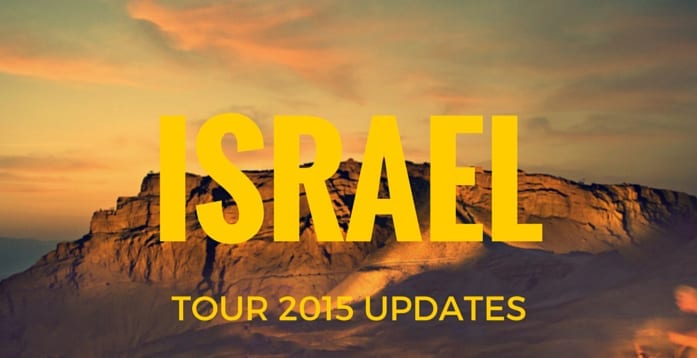Today we are in the Galilee region staying in the city of Tiberius. We started our time here by having a night out on the town (we arrived late) and grabbing some good coffee at a local shop. The next morning everyone awoke to see the Sea of Galilee out their window with the sun rising and declaring the glory of God. It isn’t hard to understand why Jesus would have risen early in the morning to get away and pray when you see the splendor of this place.
The Sea of Galilee is a beautiful freshwater lake. It is shaped like a harp and its Hebrew name, Yam Kinneret, comes from the word kinnor, which means, “harp.” It was also known as the Lake of Tiberias after the nearby city, built by Herod Antipas. “Galilee,” the name by which the lake is known in the Gospels, means, “ring” in Hebrew. This comes from the surrounding mountains on all sides except the north.
In Jesus’ day the lake was divided between Jewish and gentile populations. Jewish areas were concentrated from the west, around to the northeast. Gentile populations surrounded the rest of the lake. It is important to read the events of the gospels in light of where they took place around the Sea of Galilee. Some locations are important in understanding the context and method of Jesus’ ministry.
Then we went on to the Golan Heights and experienced sites such as Tel Dan, an ancient settlement of the Canaanites and Israelites. We observed an alter platform dating back to 900 B.C. At the time of King Jereboem.
Upon seeing Dan for the first time, you may have to remind yourself that you are in Israel. Visitors immediately notice the tangled jungle of trees, the water tumbling down small waterfalls, ancient oaks and pistachio trees towering overhead, and thick carpets of moss and maidenhair ferns. The spies’ report back to the tribe of Dan was true. It is a land that wants for nothing (Judges 18:10).
We learned about not just serving God out of convenience or comfort, but to obey out of sacrifice and love for God.
We ate lunch in a small hole-in-the-wall falafel place and then we’re on to Ceaserea Phillipi where Jesus asked, “Who do people say that I am?” We saw several other sites and are being transformed by the move of God’s spirit and the truth of His Word.
With this question, Jesus of Nazareth challenged those false gods. Peter answered, “the Son of the living God”. The emperor Augustus, to whom the nearby temple was dedicated, was dead. There were dead gods, and there was the living God. Perhaps there was hope after all.
But the disciples had much to learn about what that meant. The Roman gods came to rule. The Messiah came to serve. The Greek gods came in strength. Jesus came as a baby in a manger. Caesar Augustus had made many suffer. The Lord of All would suffer for the sins of the world.
For more frequent updates please check out some of my social media channels:







![Where is God when Discouragement Sets In? [Sermon]](https://joshweidmann.com/wp-content/uploads/2022/06/paola-chaaya-eAkjzXCU0p0-unsplash-180x135.jpg)

![How to Help Kids with Anxiety [video]](https://joshweidmann.com/wp-content/uploads/2020/07/mladen-borisov-RzbUUaP2JXY-unsplash-180x135.jpg)






